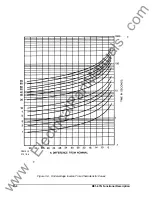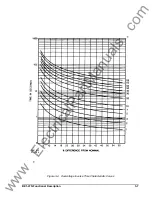
BE1-47N General Information
1-1
SECTION 1 • GENERAL INFORMATION
PURPOSE
BE1-47N Voltage Phase Sequence Relays respond to negative sequence voltage (V
2
) which results from
a fault or misconnection on a balanced, three-phase system.
APPLICATION
BE1-47N relays are designed to protect equipment from damage caused by phase failure, reverse phase
sequence, phase unbalance, undervoltage, or overvoltage.
The relay detects reverse phase connection of lines, transformers, motors, generators, and synchronous
condensors and is often applied in automatic transfer schemes to assure connection of proper phase rotation
as well as voltage conditions. When used in motor protection, the relay will provide protection by preventing
start-up of the motor for open phase or reverse phase condition and by tripping the motor off line for phase
unbalance, undervoltage or overvoltage conditions.
Negative sequence voltage is the result of any unequal phase condition on the source. This can be due to
unequal single phase loads on the system or unequal transformer impedances between the phases. A 1%-
2% level can normally be expected in an industrial supply. Any significant increase above this level can be
an indication of a power service problem and could lead to serious plant problems. The BE1-47N has the
ability to detect negative sequence voltage levels of this magnitude.
Undervoltage and voltage balance relays have traditionally been applied for the protection of induction
motors from operating with one phase open. These relays may not reliably detect this condition due to the
back emf of the motor on the open phase. However, an induction motor, with a starting current of 6 per unit,
will generate a negative sequence voltage of 16% if fully loaded when a fuse blows. The negative sequence
voltage will be somewhat reduced if the motor is not fully loaded. The sensitivity of the BE1-47N and its
insensitivity to frequency allow reliable protection to be applied to motors.
Motor losses and current unbalance increase with the negative sequence voltage level. The increased loss
due to negative sequence voltage is not a function of motor load but is independent. A machine operating
with 3.5% negative sequence voltage will have its losses increased by 25%. A blown fuse on a power factor
correction capacitor bank can result in significant negative sequence voltage increase. The effect of this
condition can be costly.
BE1-47N relays can be applied to protect motor buses from an open phase. It can also be applied to protect
critical individual motors, static, and nonrotating loads from the effects of negative sequence voltage.
A choice of time delay characteristics allows the relay to respond in the desired manner for a wide variety
of transient and fault conditions.
BE1-47N relays may also be used to provide over/undervoltage protection as well. A separate time delay
is utilized to prevent shutdown of equipment for minor voltage dips and to permit sequential operation when
the relay is being used in a supervisory capacity.
PHASE ROTATION SENSITIVITY
Relays that operate using phase-to-phase voltage to determine negative sequence are sensitive to phase
rotation. BE1-47N Voltage Phase Sequence relays are phase rotation sensitive. Unless otherwise noted,
all connections shown in this manual assume ABC rotation.
www
. ElectricalPartManuals
. com






































